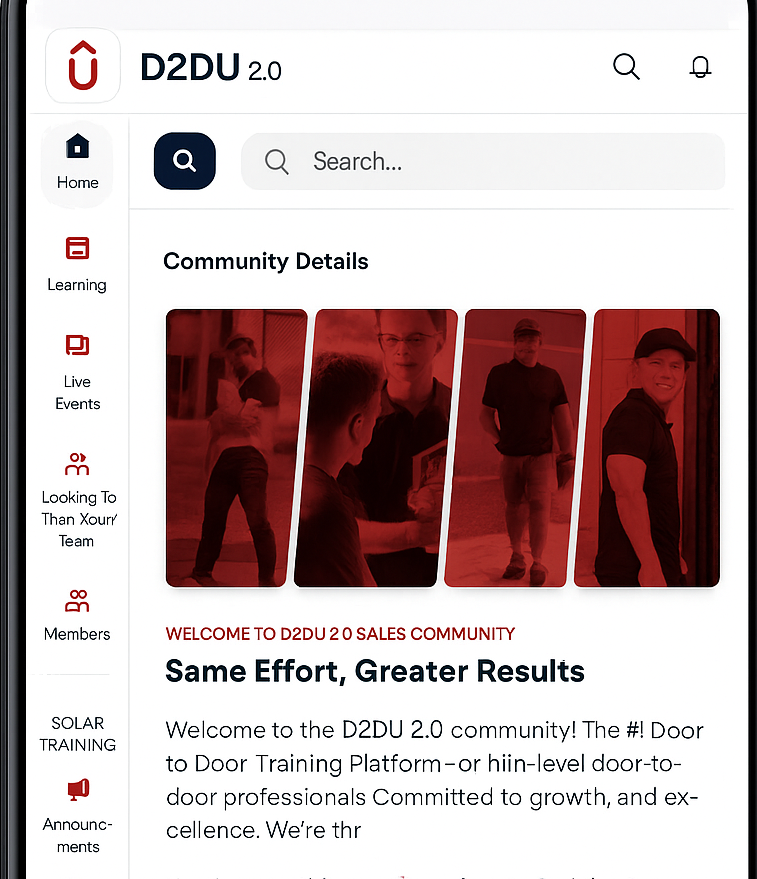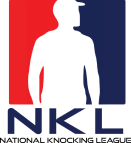Door-to-door sales can seem daunting, but with the right mindset, tools, and strategies, anyone can become a top performer. The difference between a frustrated salesperson and a successful one often boils down to preparation and resilience. This guide will break down how to be a good door to door salesman and transform that inevitable rejection into consistent success.
Here are the key takeaways:
- Learn how to confidently approach potential customers.
- Overcome the fear of rejection with actionable strategies.
- Discover tips to craft the perfect sales pitch.
- Understand the mindset required for success in door-to-door sales.
How to Be a Good Door to Door Salesman and Overcome Common Rejection Challenges
Top Qualities of a Successful Door to Door Salesman
Confidence is Key
Confidence isn’t about arrogance; it’s about projecting genuine belief in yourself and your product. When you approach a door with self-assuredness, you can ask challenging questions to ensure the prospect is a good fit, rather than nervously pitching everyone.
Bonus Point: The most successful sales pros use confidence-boosting language like “definitely,” “certainly,” and “absolutely” five times more than low performers. Furthermore, optimistic sales professionals outperform pessimists by 57%, even when the pessimists have better selling skills.
Resilience in the Face of Rejection
In the world of door-to-door sales, rejections are numerous and inevitable. Resilience is the ability to bounce back after a difficult ordeal and keep moving forward despite difficulties. Without it, you’re destined to quit.
Studies show that resilient salespeople hit their targets 34% more often. Resilience leads to improved sales performance through perseverance and adapting to challenges, rather than breaking down.
Strong Communication Skills
Selling is listening. Strong communication involves mastering both persuasion and, more importantly, active listening to genuinely connect with customers. Buyers consistently rank “Listen to my needs” as one of the most important things they want from sales professionals.
Overcoming Rejection: A Step-by-Step Approach
Developing Mental Toughness
Mental toughness is the fortitude to withstand the emotional toll of constant “no’s.” You can strengthen your mental fortitude by shifting your focus from the result you can’t control (a closed sale) to the actions you can control (making the approach or executing the pitch).
Rejection as a Learning Tool
Every sales rejection is a learning opportunity. Instead of seeing failure as a reflection of your competence, view it as a normal and occasional stage in the sales process.
- Analyze the ‘Why’: Take the time to analyze what went wrong. Did you pitch too early? Did you fail to listen to a specific need?.
- Adapt Your Strategy: Failure often reveals a weakness in your approach. Use that insight to adjust your sales pitch or emphasize a product’s value over its price.
Building Rapport Quickly
Since you only have seconds at the door, you must learn techniques to win over customers fast.
- Positive Body Language: Smile naturally, maintain appropriate eye contact, and use an open posture to convey warmth, trust, and approachability.
- Mirroring: Subtly mirror the prospect’s posture or movements to show interest and empathy, but be careful not to make it obvious.
Proven Strategies to Excel as a Door to Door Salesman
Crafting the Perfect Pitch
Your pitch must be tailored to the customer’s needs, not just a recitation of product features. After asking thoughtful questions to uncover their pain points, paint a clear “happy ending” by showing the prospect how your solution solves their problem.
Using Body Language to Influence Buyers
Studies indicate that more than 50% of communication is non-verbal. Your body language significantly influences how buyers perceive you within the first few seconds.
Note: A confident posture and engaging gestures reinforce your verbal persuasion, while negative body language (like crossed arms or slouching) can signal insecurity or disinterest. You should always maintain a posture that exudes credibility and authority.
Mastering Time Management
Poor time management is a major reason why sales teams fall short. The average salesperson spends just a third of their time selling; the rest goes to admin and other non-revenue-related activities.
- Focus on Top Prospects: You can significantly enhance your conversion rates by focusing on your best prospects, which are 2.6 times more likely to convert than the least promising leads.
- Automate Admin: Use CRM tools and apps to automate background research, pipeline tracking, and follow-ups to reclaim time for selling.
Real-Life Success Stories: How Top Salespeople Overcome Rejection
Field Story #1: Turning “Come Back Later” into “Let’s Do It Now” (Oscar Luna)
The objection:
“Solar takes forever. Let’s revisit in spring.”
What he did:
- Lead with DTI (Days-to-Install): Oscar reframed the fear of delays with hard timelines—installs in days, not months (West Texas averages ranged from ~2–15 days depending on permitting).
- Make waiting feel expensive: When he was already in on alarms, he bundled a free year of monitoring if the homeowner went solar now—not later.
- Keep the brain in decision mode: He used an assumptive choice that moves the convo forward: “If I hold your roof spot for this week, do you want morning or afternoon?”
Why it works:
- Replaces a vague worry (“it’ll take forever”) with a verifiable clock.
- Adds a tangible, immediate win (free monitoring) that makes delay feel like a loss.
- Assumptive choices reduce back-and-forth and keep momentum.
Results:
- 416 alarm installs + 382 solar installs in a single year. The DTI + bundle approach consistently flipped the “later” stall into an on-calendar install.
- Full episode/article for context: Oscar Luna: 416 Alarms & 382 Solar Deals in One Year →
Lines you can test:
- “The only reason people wait is slow installs. We don’t do slow installs.”
- “If I lock your spot for this week, do you want morning or afternoon?”
Field Story #2: Beating “I Need to Think About It” with Discovery → 3-Option Close (Tanner Sewell)
The objections:
“I need to think about it.” / “That’s too expensive.”
What he did:
- Stage 1 — Slow down to speed up: Tanner runs a deliberate discovery up front to surface why now (risk, cost, timelines). By the time price shows up, there’s nothing new to “think about.”
- Value math, not price shock: He translates sticker price into problem math (current cost, future cost, risk cost), so the recommended option becomes the cheapest path to their stated outcome.
- Stage 2 — 3 choices aligned to pains: He presents Good / Better / Best mapped to what the buyer said matters, then uses a micro-assumptive: “Which version fits how you said you want to solve this—starter, standard, or full?”
Why it works:
- Most “think about it”s are hidden information gaps or unvoiced risks. Good discovery closes those loops before they turn into stalls.
- Options keep control with the buyer while preserving momentum—your close becomes a selection, not a showdown.
Results:
$3M sold in 18 months using this discovery-led, options-anchored flow.
Full episode/article for context: From Teacher to $3M Seller: Tanner Sewell’s Golden Door
Questions/lines you can test:
“Cool—based on that, here are three ways to solve it. Which one matches what you said you want?”
“What’s pushing this now instead of six months from now?”
“If we do nothing, what’s that cost you in the next 12 months?”
Taking the First Step: How to Start Your Door to Door Sales Journey
Building a Sales Plan
A strong sales plan turns chaotic daily activity into a focused strategy. Start by reverse-engineering your goals: determine how many deals you need, then calculate how many pitches that requires, and how many approaches you need per day.
Setting Realistic Goals
Set specific, measurable, and time-bound goals for sales success. Shift your focus to activity metrics (like the number of approaches or presentations) rather than only broader sales goals (like the final quota). This helps you feel more in control and increases confidence by focusing on small, achievable daily wins.
Note: Door-to-door selling is about using ethical sales practices. Never employ aggressive or deceptive tactics, as this erodes trust and damages your long-term success.

Ready to Take Action? Key Resources to Help You Succeed
Recommended Sales Training Programs
The greatest salespeople are relentless learners. Investing in recommended sales training programs ensures your skills and pitches stay sharp. Training allows you to practice skills in a safe environment, which builds the competent confidence needed to handle high-pressure situations.
Tools and Technology for Salesmen
In today’s market, technology is non-negotiable. Utilize:
- CRM Tools: These apps help you track leads, manage follow-ups, and automate background research.
- Mapping/Data Apps: Use digital tools to analyze the best houses in a territory, avoiding random canvassing and optimizing your time.
Fewer “try again tomorrow” days
Quick bites, real scripts, instant answers (for free)

FAQs (Frequently Asked Questions)
What is the best way to handle rejection as a door-to-door salesman?
The best way to handle rejection is to adopt a resilience mindset: Accept that rejection is part of the numbers game, analyze why you were rejected (Was it timing? Was it the pitch?), and use that feedback to improve your next approach.
How can I make a sales pitch that stands out?
Make your pitch stand out by focusing on the customer’s needs and personalizing the experience. Ask thoughtful questions, listen actively to the answer, and tailor your value proposition to solve their specific problem.
How do I improve my closing rate in door-to-door sales?
Improve your closing rate by being persistent—80% of prospects say no four times before they say yes. Additionally, focus on your best prospects (who are 2.6 times more likely to convert) and ensure your body language conveys confidence and trust.
What are the most common mistakes door-to-door salespeople make?
The most common mistakes are spending too much time on administrative tasks (up to 65% of the day), failing to follow up persistently, and lacking confidence or belief in their product.
How important is body language in door-to-door sales?
Body language is extremely important. Studies indicate that more than 50% of communication is non-verbal. Positive body language builds trust and makes you appear credible, while negative cues like crossed arms can signal defensiveness.
How do I stay motivated when facing constant rejection in door-to-door sales?
Stay motivated by focusing on intrinsic motivation, celebrating small victories, and focusing on activity metrics you control (like setting a daily approach goal). Remember that resilience comes from experience and a pragmatic approach to setbacks.
Can door-to-door sales still be profitable in today’s market?
Absolutely. The global door-to-door sales market was valued at approximately $200.14 billion in 2022 and is projected to grow. The industry thrives because no app or algorithm can replace the power of a personal, face-to-face connection.
Final Thoughts on Becoming a Successful Door to Door Salesman
Success is the sum of small efforts, repeated day in and day out. Becoming a good door to door salesman requires discipline. You must prioritize confidence, cultivate fierce resilience against rejection, and commit to continuous learning to keep your skills sharp.
Take the first step today: pick one tip—like dedicating 30 minutes to practicing your pitch or setting an activity goal—and commit to it.
With over two decades of expertise, I have consistently propelled businesses towards transformation, reshaping existing ventures, and capitalizing on emerging trends. My extensive background spans across general management, new business development, product management, sales, and operations. My success lies in my ability to seamlessly navigate various roles, showcasing a proven track record in aligning business objectives with an innate talent for crafting effective strategies and executing comprehensive business plans.






















